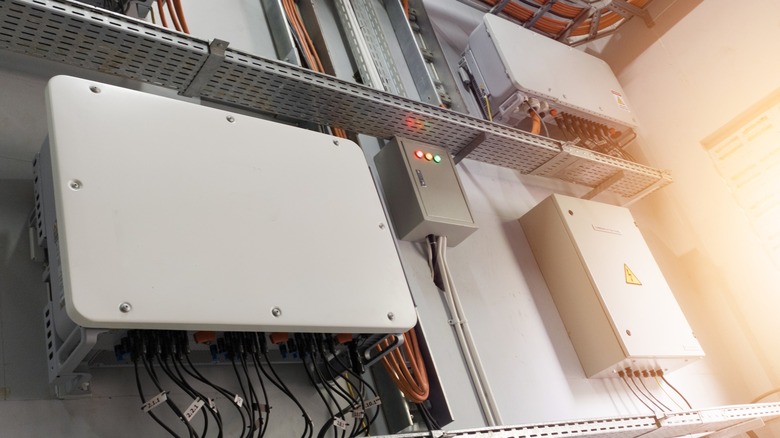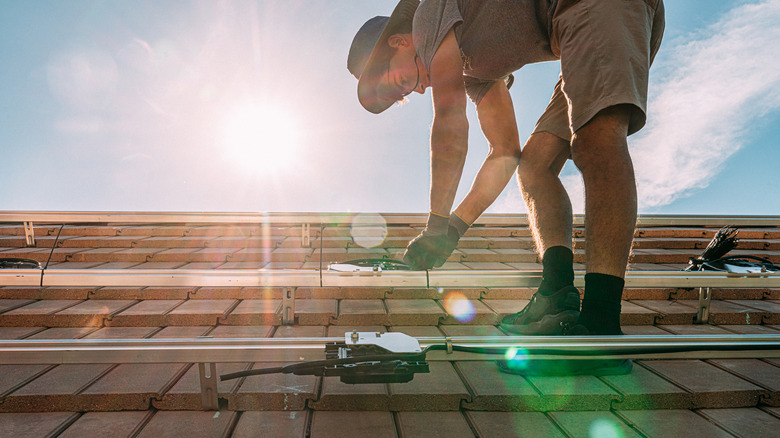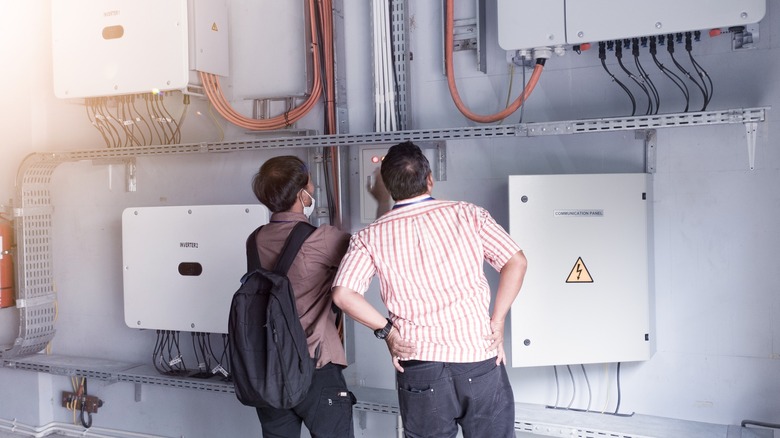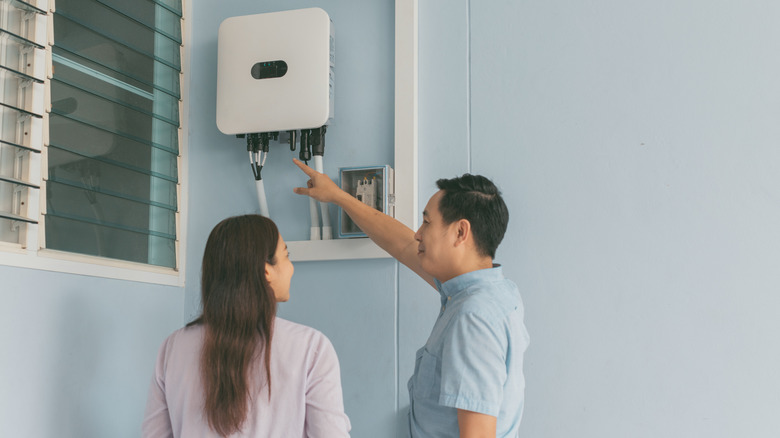Solar Panel Inverters Explained: What They're Used For
Solar panels are steadily gaining ground with consumers as a viable renewable energy option for powering one's home. While most people are familiar with solar panels, which are the often large panels pointed at the sun during the day, they are only part of what makes an overall solar system tick. The proverbial "heart" of the system is a component called the solar inverter, which is the part of the setup that converts the energy from sunlight into electricity that your home and appliances can use.
There are a few different types of solar inverters on the market, each with its own upsides and downsides. Some inverters can keep the power flowing even if one panel breaks, while a different type will suffer in the same circumstance. Understanding how each type works will help you make a more informed decision when purchasing or building your own solar system, whether for your home, a greenhouse, or as a backup system for use during power outages.
What is a solar inverter?
When a solar panel is exposed to sunlight, it produces direct current (DC) electricity.A solar inverter is the device that takes the direct current and converts it into alternating current (AC) energy. On their own, solar panels can only generate DC, which means they are not compatible with powering homes, which exclusively use AC, as well as the majority of appliances — hence the need for an inverter. As well, solar panel inverters have several features that are beneficial and convenient with regard to the entire solar power setup.
For example, most modern solar panel inverters can display, at minimum, the day's basic system stats, such as whether the battery is currently charging and how much power the solar panels have generated. This functionality is usually basic, but more advanced features — such as monitoring power generation over time — may be made available in a companion mobile app. Regardless whether your solar setup uses a mobile app or inverter for monitoring, however, the inverter remains a key part of the system, as you won't be able to power your home and appliances using sunlight without it.
Types of solar inverters explained
There are different types of solar inverters, each designed for different applications and usage scenarios. The most common type of solar panel inverter is the string inverter, also called a central inverter. The name comes from the design, which involves a series of interconnected panels "stringed" together with wires. This type of inverter works best in setups that are free from shade; it's typically the cheapest option and is relatively simple to maintain. The biggest drawback of this type of inverter is its requirement for maximum sunlight exposure, plus, if one panel breaks, the overall power output of the system takes a hit.
If that's a concern, you may want to consider a micro-inverter instead — it's a type of compact inverter that is installed on each individual solar panel, allowing them to perform at maximum efficiency regardless of the status of the other panels. This also makes it easier to pinpoint which panel is having issues. Micro-inverters tend to cost more than their string inverter counterparts, though.
Homeowners may prefer a hybrid solar inverter, however, which combines a solar inverter with battery inverter functionality in a single device, allowing for uninterrupted power supply as the battery will act as a backup during instances of power outages. The surplus energy stored in the battery inverter can also be sent back to the power grid for net energy credits, as well, saving you on your electrical bills.
What to look for in a solar inverter
You have to consider more than just the solar inverter type when deciding which to purchase. First, check the warranty. Since solar panel systems and installation can be quite costly, a warranty can help set your mind at ease when it comes to potential future malfunctions. Solar panel inverters will usually have separate warranty periods that may cover five to 25 years, depending on the company and product. Always read through the fine print to understand what the warranty covers.
You should also check the peak and weighted efficiency of the solar inverter. Peak efficiency indicates the maximum capability of the inverter measured via a precise input power, which you have to understand that it won't always meet. This is why a weighted efficiency rating is vital, as it provides a more realistic reading because it includes variables that can affect DC input levels. These two numbers should help you determine whether the solar inverter will meet the requirements of your home.
The last factor to consider is the operating temperature of the solar inverter; it is best to pick one that has the highest operating temperature to ensure that it will operate at or close to its peak performance. If you pick a solar inverter that isn't able to handle the extreme ends of your climate's temperature range, you may experience degraded performance during certain times of the year.



